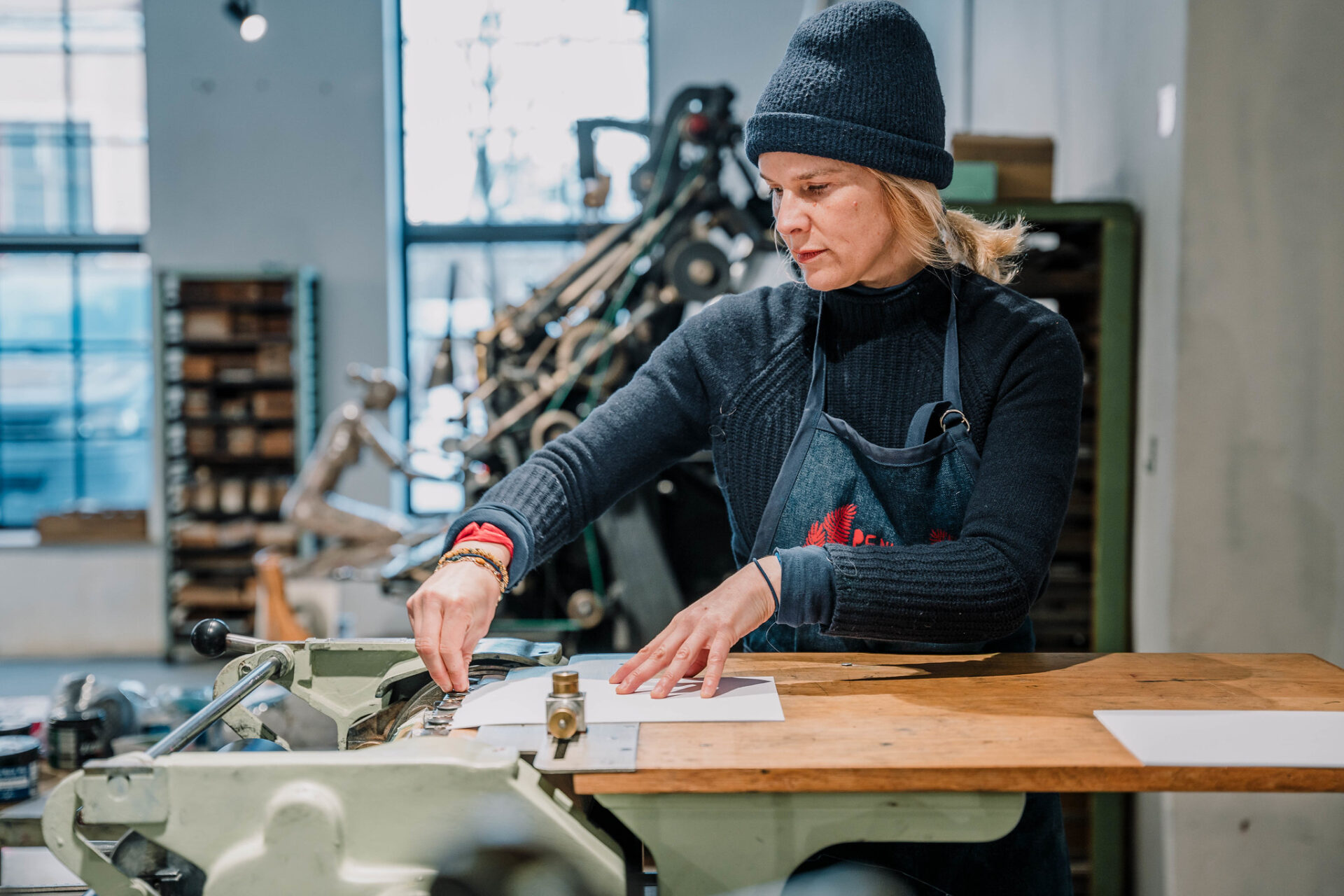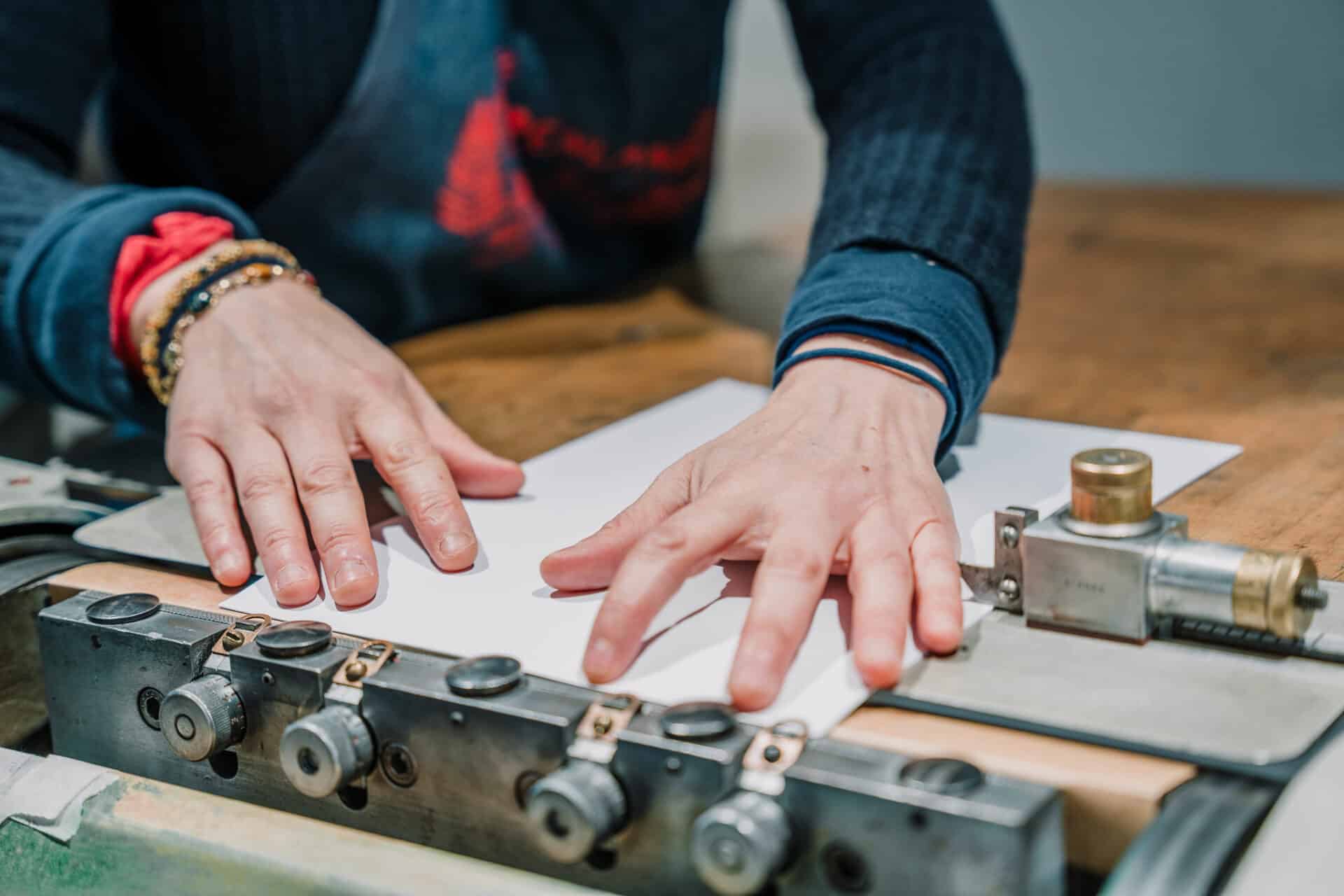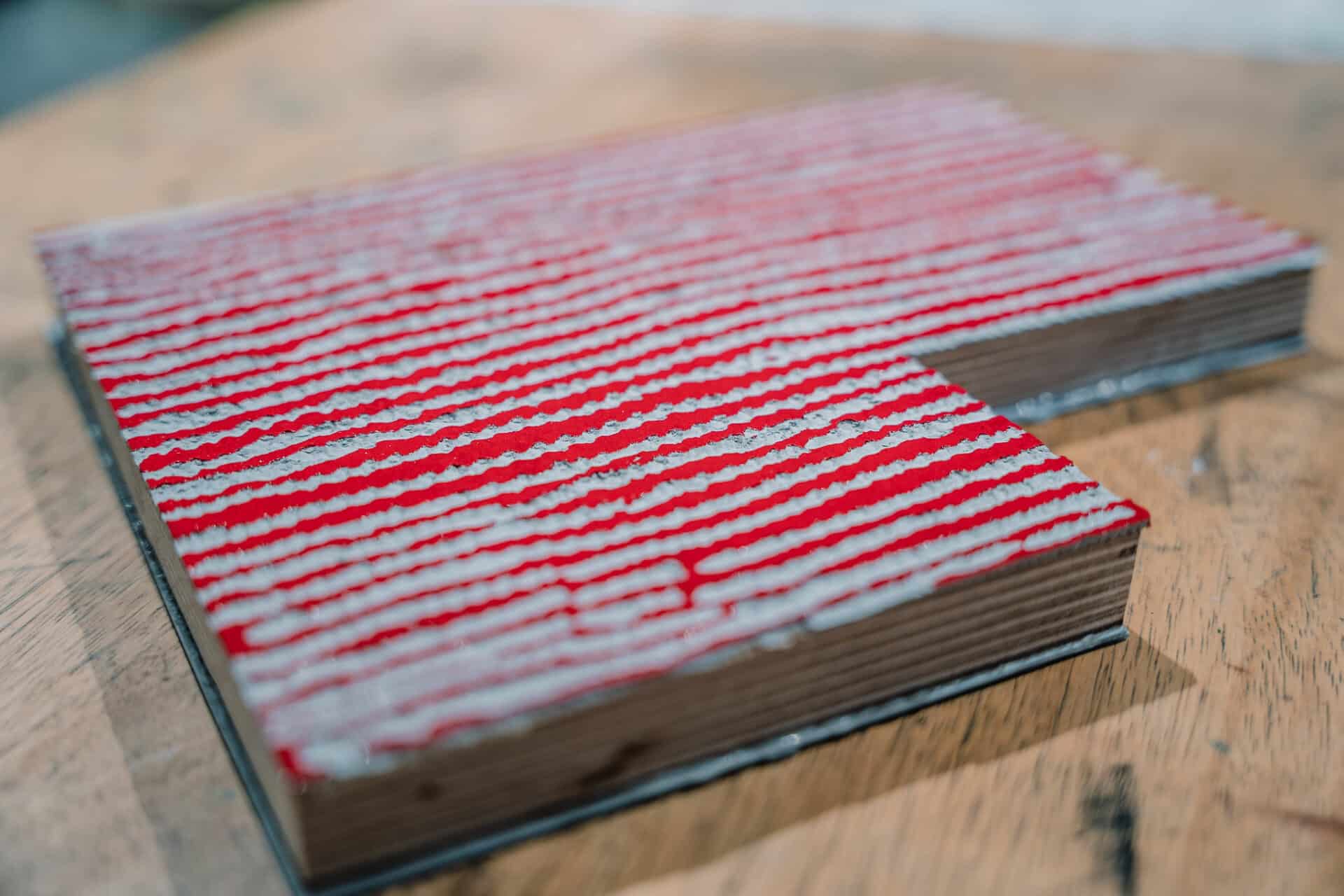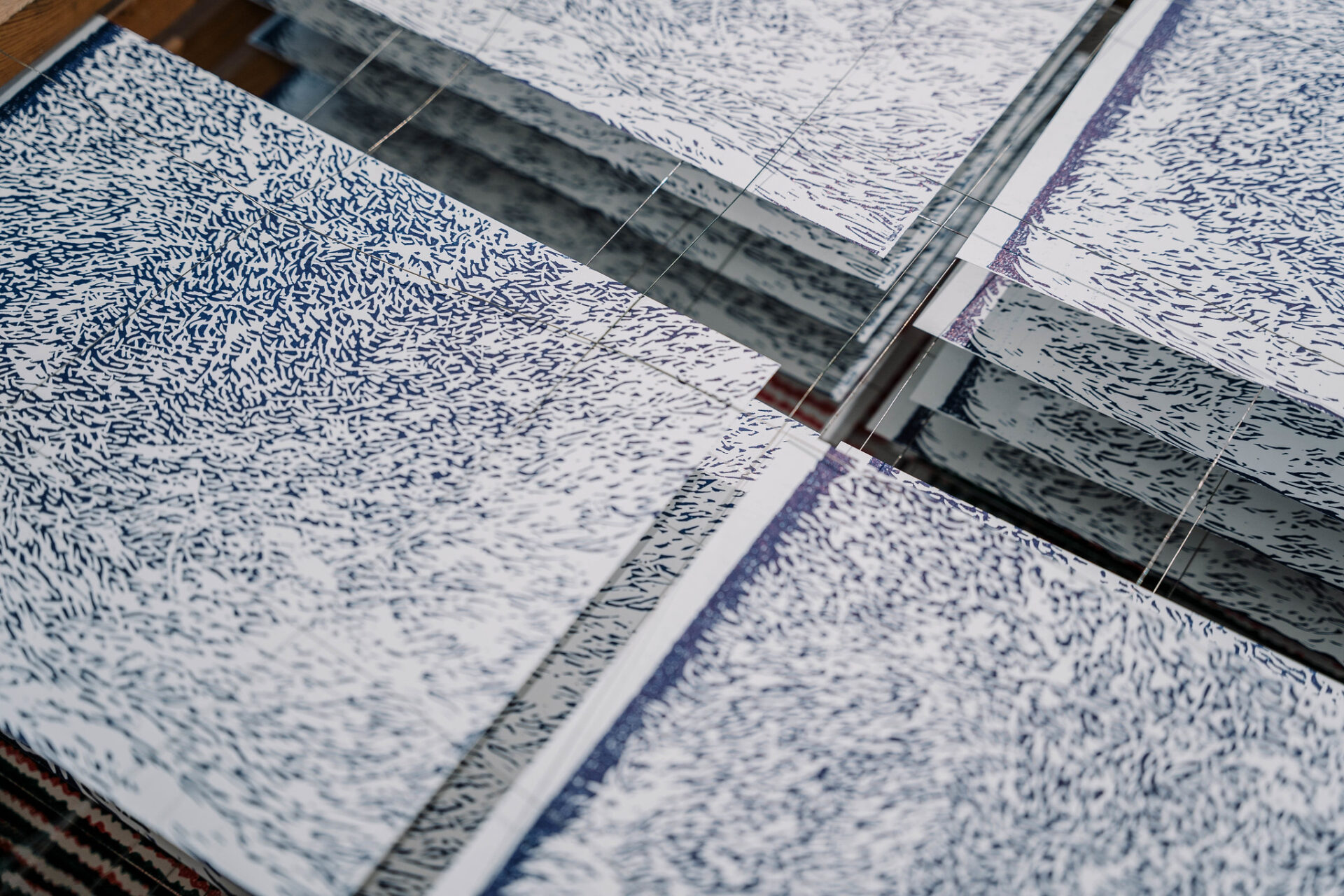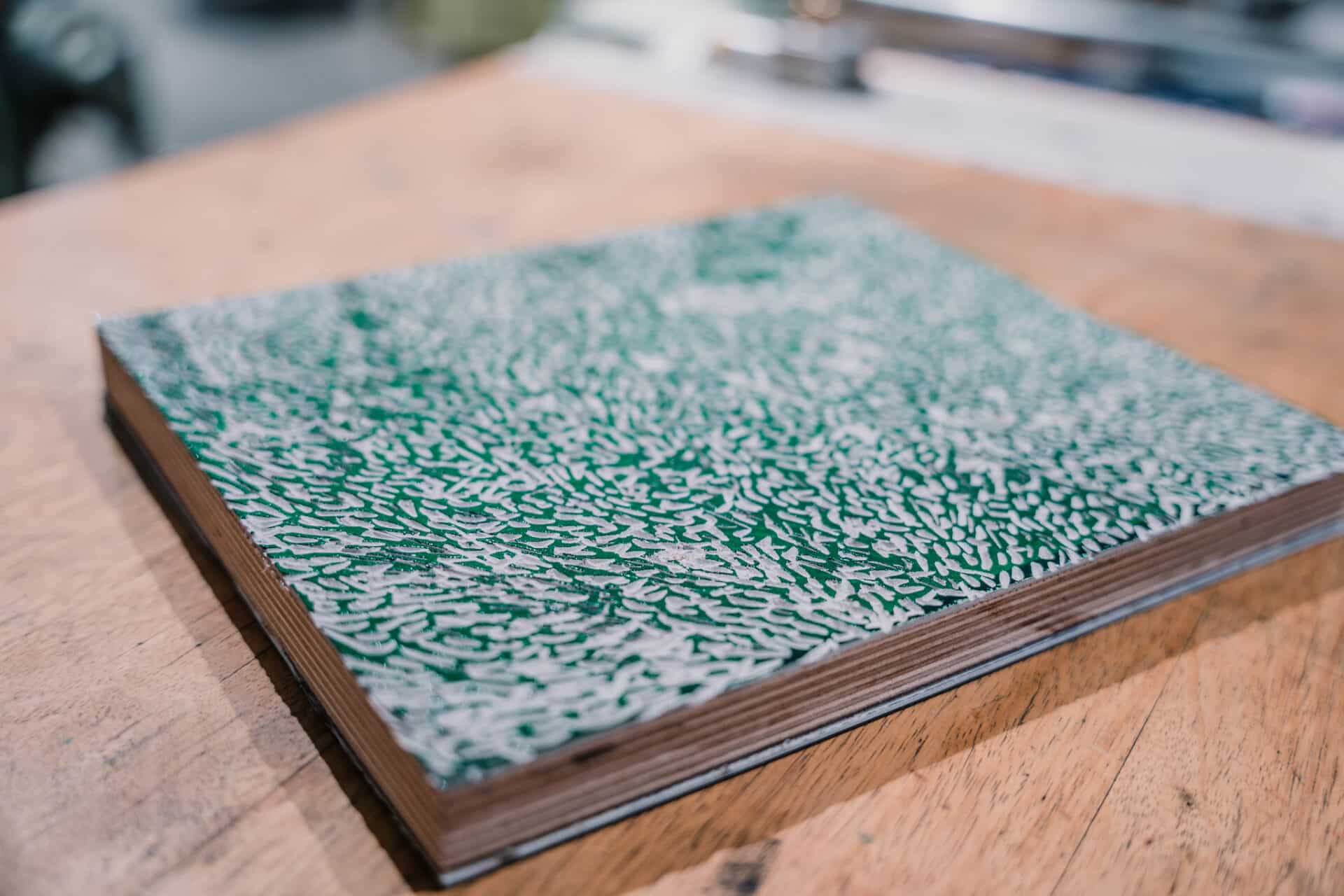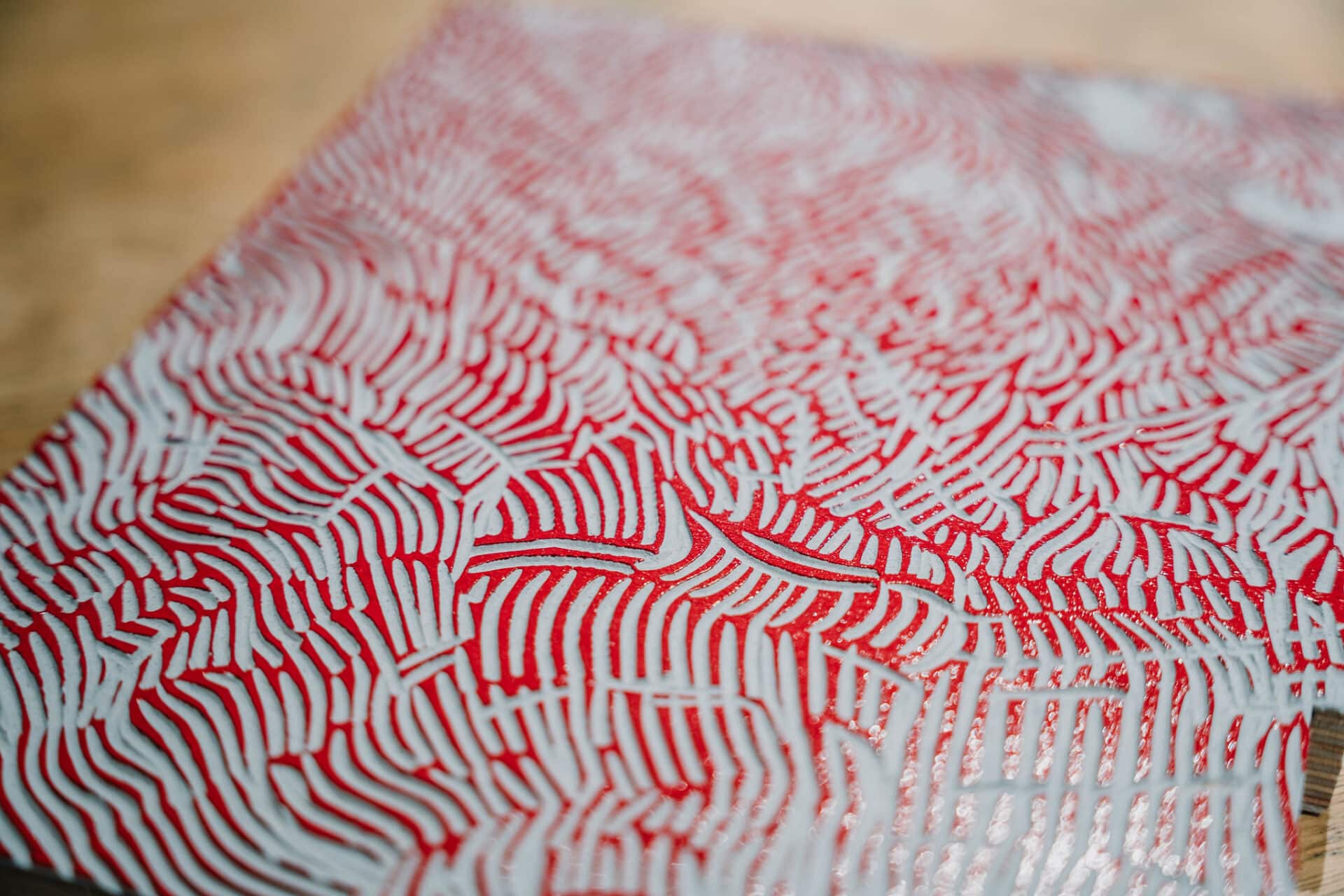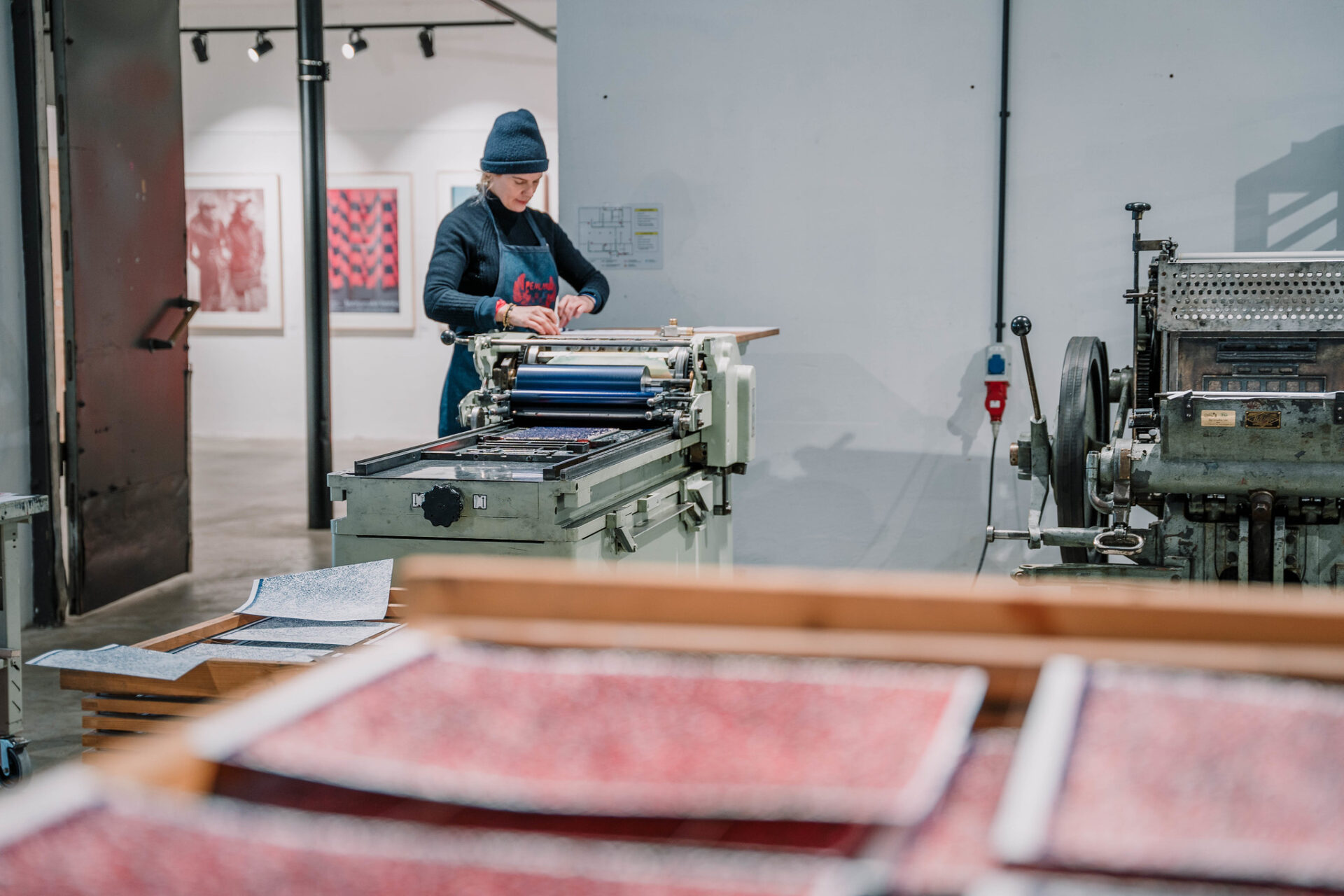Jennifer Schmidt is a multi-disciplinary artist from Brooklyn, NY, who works with print media, graphic design, writing, and sound to create site-specific installations, multiples, and performances.
During her residency at TYPA in February 2023, Jennifer continued working on her project “Parallelogram: the Waves”, a feminist ephemeral archive of prints.
Why did you choose TYPA for your residency program?
I chose to work at TYPA because I was really interested in learning about the letterpress machines and their history at the centre. I love the idea of activating the history and function of the machines through continued use, and how that quotes the time in which they were made. TYPA is really unique as a residency, workshop and museum where there are multiple conversations happening at once about the history of letterpress, publishing, print, and typography….. in general, and specific to the machines and collection of equipment / tools / materials. I was really interested in learning about print in Estonia, Europe, and the role of print technologies in Soviet times.
The TYPA residency called for artists working with print in experimental ways… this stood out to me. I knew that I would have the chance to work with print in exploratory and indeterminate ways, while using my skills.
What excited you the most about your residency with us?
I really enjoyed learning about the machines and their use, while spending time with the staff making things. TYPA is a working print, paper and bookbinding studio. The staff are actively using the equipment for production: to make sketchbooks using old soviet book covers, letterpress printing poetry books for hire, designing plates and layouts for print projects, and making paper sculptures. TYPA is also actively collaborating with other organizations and individuals in Estonia to create an arts network of making and sharing. They give their unused and discarded papers to a paper factory nearby to make brightly colored recycled paper, which is then used for projects.
By being in the studio and museum observing these activities, I learned how to use the machines and how to create paper, books etc. using the tools, while being involved in an ongoing cycle of production.
While here, you were working on your project “parallelogram: the waves”, can you say a few words about the project?
Parallelogram: The Waves is a feminist performative print project that involves printing a series of prints using the Vandercook and Fag-Standard letterpress machines to create an ephemeral archive of images. The prints are textual – they are printed on a textual machine. They tell a non-scripted, non-linear narrative that runs parallel to actual events unfolding in time.
I started it in 2017 after reading Virginia Woolf’s novel “The Waves.” The novel is a play poem where characters are in dialogue, speaking to each other about their relationships while describing the room, the house, the view of the sea– how the light shifts and looks on the water at different times of day. One of the people mentioned in the conversation is not even there. The characters are sorting out their experiences, observations, feelings and histories through the sharing of moments both past and present, while the setting is vividly described in real time.
Printed in red, green and blue ink, my project “Parallelogram: The Waves” is a perceptual, haptic, and sensory event. It exists as chapters and folios, prints that are to be pinned, hung, flung, sorted, spread, stacked, and turned in the hands and eyes of the viewer as an installation. The prints are printed by the narrator and archivist, who is myself, a skilled printer.
How did your time with us inspire you, what will you take from it?
I was very inspired by the history of Estonia as a formerly occupied country that is once again independent, and the “can do, make it happen, be resourceful” attitude that goes along with that. The skill, material sharing, and re-purposing of found materials and objects is very inspiring as a form of creation and revision. Ownership and invention.
I really value the strong work ethic and collaborative approach to making things happen that I observed, and hope to carry that with me. I think we often take things for granted in the United States. There’s something to be said for having to examine your values based on access, need, and know how, and how that helps to define community and citizenship at large.
